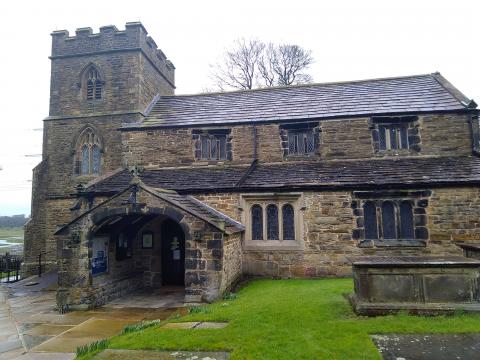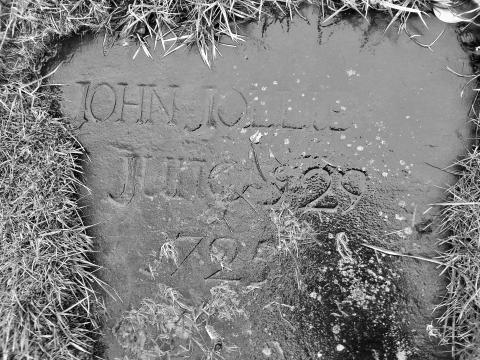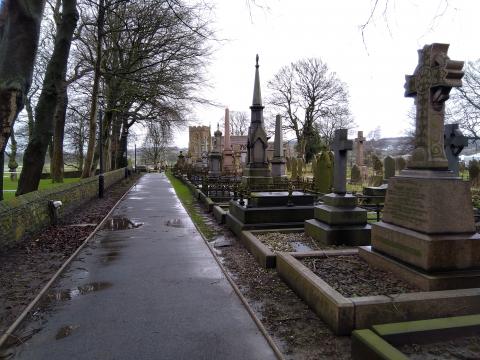Thomas Jollie’s Missing Gravestone

I went to find the grave of Thomas Jollie (died 1703), puritan minister of East Lancashire at the time of Cromwell. Staying next to Altham’s Anglican parish church, which he converted into a congregational church like our own, I had the leisure to wander about its yard and seek the grave. This was in fact the third attempt I had gone looking for it; this time also, I was going home empty-handed. Unusually, this church yard has a good number of seventeenth-century headstones, but only one bore his surname, and this was inscribed some time after he died in 1725. A perusal of the parish’s website states that it is thought he is buried here, along with the nephew whose name is on the stone. It seems strange that so great a man should have no obvious memorial, unlike the lesser-known folk whose cadavers fill the ground. It set me wondering why.

Perhaps Elisha Clarkson, vicar since 1671, was still smarting from Cromwell’s puritan revolution, for which Thomas Jolley was the local personification. He may have objected to having the Rebel’s friend buried in his church, the congregationalist interred in this hallowed plot of Anglicanism. Like Ahab eyeing Elijah, Clarkson may have considered Jolley a ‘troubler of Israel’. Unable to refuse the interment, he may have forbidden a public memorial. Jolley requested to be buried at the place of his only public ministry, but the authorities may not have honoured the wish of a man they loathed.
It might be that Jolley’s estate could not afford the expense of a stone. Subject to various fines and bouts of imprisonment, Jolley’s finances were stretched as he funded his ministry after the Restoration. Buying a slab of stone with a skilled mason’s inscription may have been too frivolous a luxury for a modest account to bear.
Alternatively, his stone may be counted among the many which are now unreadable on account of weathering and age. Bumps and grooves may be detected, sometimes syllables and figures, but centuries of erosion may explain the seeming absence.
Fourthly, he may be buried anonymously, and this may have been Jolley’s own wish. In May 1564, John Calvin was buried in an unmarked grave according to his wishes, that his resting place might not become the focus of the very idolatry he had spent his life opposing. Perchance Thomas Jolley, fearing the likes of me would overly relish a visit to his tomb, deliberately concealed his resting place. So great a man of God would not desire seek posthumous admiration, but would rather urge us seek the face of Christ, whose empty tomb is well known.
He is not here; he has risen.
Matthew 28:6

- Log in to post comments


 Sunday Worship 10.45am & 6.00pm
Sunday Worship 10.45am & 6.00pm